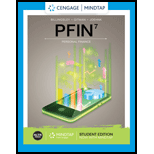
To discuss: The basic principles and importance of property insurance, including types of exposure, indemnity and co-insurance
Explanation of Solution
Some of the basic principles of property are as follows:
Principle of utmost good faith: This principle states that the insured and the insurer are required to exchange true and complete information to each other.
Principle of Contribution: This principle states that if different insurance companies are providing coverage to the same property, then the actual amount of loss is divided proportionately among all the companies providing insurance.
Principle of Subrogation: In this principle, the insurance company posses the legal rights of the property insured.
Importance of property insurance:
Property insurance is crucial because it provides protection against different perils and calamities like windstorm, fire, vandalism, theft to the persona and real properties. An individual must give equal importance to property insurance as one gives to health and life insurances.
Types of exposure:
- Exposure to property loss: When an individual is exposed to the physical loss of the property, this is exposure to property loss. Most of the property insurance contracts identify the perils that are the reasons behind the loss and the property covered.
- Exposure to liability: When an individual is exposed to the losses through liability, this is known as exposure to liability. Some of the examples of liability exposure can be driving a car, being careless about some professional duties and others.
Principle of Indemnity: According to the principle of indemnity, the insured will not get compensated more than the economic loss he/she incurred. The objective of this principle is to get protected from the dishonest policyholders who try to get extra advantage from the insurance.
Co-insurance: A provision that requires the holder of the policy to purchase the insurance of an amount that is equivalent to the specified percentage of the property’s replacement value. This is co-insurance. This is to help insured bear the loss through the co-insurance.
Want to see more full solutions like this?
Chapter 10 Solutions
PFIN 7:STUDENT EDITION-MINDTAP (1 TERM)
- finance subjectarrow_forwardCould you help explain, what is the complete salary survey analysis, and ensuring the data is relevant and up-to-date? What is the job evaluation and compensation plan? How to ensure the final report is comprehensive, clearly structured, and aligned with the company vision?arrow_forwardThe maturity value of an $35,000 non-interest-bearing, simple discount 4%, 120-day note is:arrow_forward
- Carl Sonntag wanted to compare what proceeds he would receive with a simple interest note versus a simple discount note. Both had the same terms: $18,905 at 10% for 4 years. Use ordinary interest as needed. Calculate the simple interest note proceeds. Calculate the simple discount note proceeds.arrow_forwardWhat you're solving for Solving for maturity value, discount period, bank discount, and proceeds of a note. What's given in the problem Face value: $55300 Rate of interest: 10% Length of note: 95 days Date of note: August 23rd Date note discounted: September 18th Bank discount rate:9 percentarrow_forwardAll tutor giving incorrect solnarrow_forward
 Pfin (with Mindtap, 1 Term Printed Access Card) (...FinanceISBN:9780357033609Author:Randall Billingsley, Lawrence J. Gitman, Michael D. JoehnkPublisher:Cengage Learning
Pfin (with Mindtap, 1 Term Printed Access Card) (...FinanceISBN:9780357033609Author:Randall Billingsley, Lawrence J. Gitman, Michael D. JoehnkPublisher:Cengage Learning Intermediate Accounting: Reporting And AnalysisAccountingISBN:9781337788281Author:James M. Wahlen, Jefferson P. Jones, Donald PagachPublisher:Cengage Learning
Intermediate Accounting: Reporting And AnalysisAccountingISBN:9781337788281Author:James M. Wahlen, Jefferson P. Jones, Donald PagachPublisher:Cengage Learning



